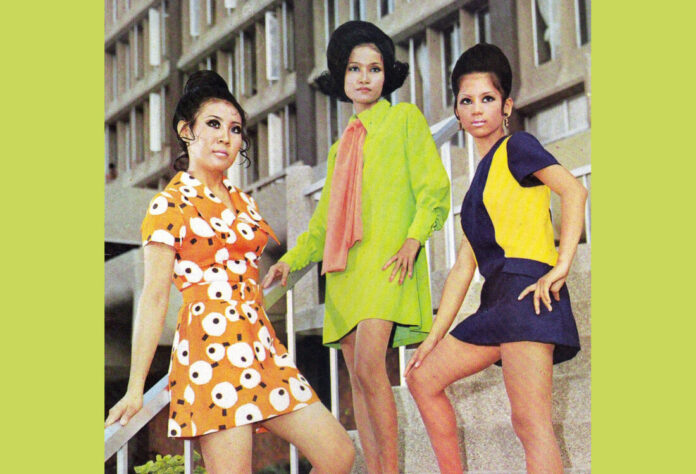
BANGKOK — Miniskirts in fresh kelly greens and sassy oranges upset a military ruler so much, he exercised his special power to cover up some young women’s thighs.
Wait – we’re not talking about 2017, when Gen. Prayuth Chan-ocha dispatched police to cover up a luk thung teen star for her sexually suggestive dance moves and revealing costumes. In 1967, the military government also waged war against the new Western fashion so popular that Thai women were making them at home – miniskirts.
In 1967, Field Marshal Thanom Kittikachorn said that miniskirts would cause sexual assault if worn. He also told TV channels to stop airing fashion shows that included miniskirts, and discouraged students and female government officials from donning them, according to a new academic paper by Villa Vilaithong, former lecturer at Chulalongkorn University and expert on Thai cultural history.
“Thanom had been a teacher before, so he was known for teaching things like morality lessons,” Villa said by phone Tuesday. “To be a traditionally respectable Thai lady, a woman should cover herself up, not wear a miniskirt that shows off her legs. But teenagers still wore it, all over the country.”
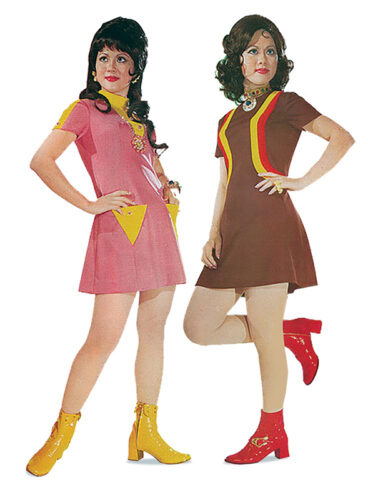
magazine. Photo: Faculty of Medicine Siriraj
Hospital at Mahidol University / Website
The historian said a war on “Western” influence corrupting Thai youth was nothing new. Thanom’s predecessor, Field Marshal Sarit Thanarat, also told people not to dance to rock and roll. “In the end, people still did it,” Villa said.
Conservative factions fell back to tradition and morality against the adoption of the miniskirt. Gen. Praphas Charusathien said in 1967 that women should not wear “miniskirts so short that they lack decorum” to temples because they “reveal inappropriate body parts.”
A column in the Lak Muang paper in the same year titled, “Do Not Wear Miniskirts into Temples,” said that “miniskirts are degeneration because they do not wholly close up embarrassing areas, creating audaciousness and sin.” The column said that women who wore miniskirts were “baiting for men.”
“They think their legs are so beautiful, but some have dark legs, rough legs, bony legs,” the column went on. “Some have legs like chopsticks, while others have bent legs or fat legs. Teenagers with beautiful legs might look good in miniskirts, but those aged more than that are just destroying their beauty.”
The shaming words had little effect in stopping the juggernaut that was the miniskirt. In 1969, the major women’s magazine Mae Sri Ruen began their yearly fashion column with a feature on miniskirts. Only in next year would they feature long maxi skirts that would become in vogue throughout the next decade.
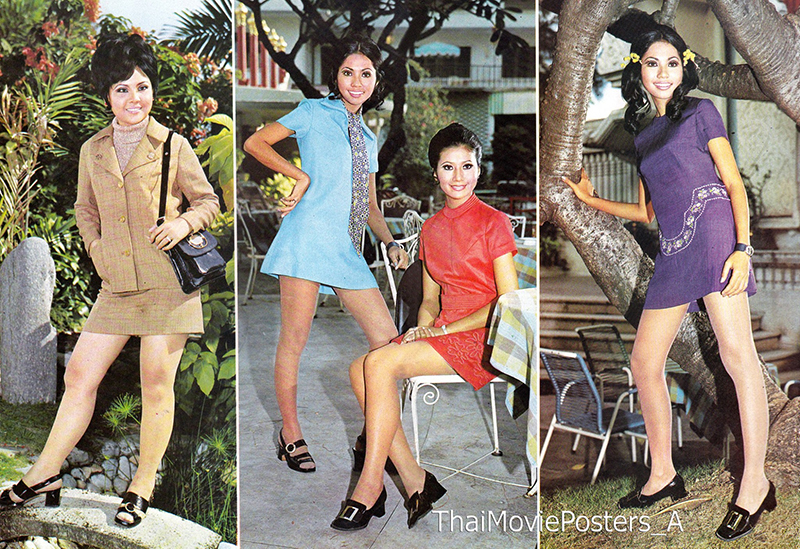
A reader who wrote a letter into Satreesan magazine in 1971 wrote “Since women are dressing according to modern times, we don’t need to be afraid. The fault is with society, not the wearer. The wearer should still dress for the occasion and know how to sit, walk, and move in [the miniskirt], or sew petticoat shorts inside.”
“When Western influence came in via clothes, Thainess became an issue,” Villa, the writer of “Dressing Thai Middle-Class Women: Designers and Beauty Culture in the Development Era,” said.
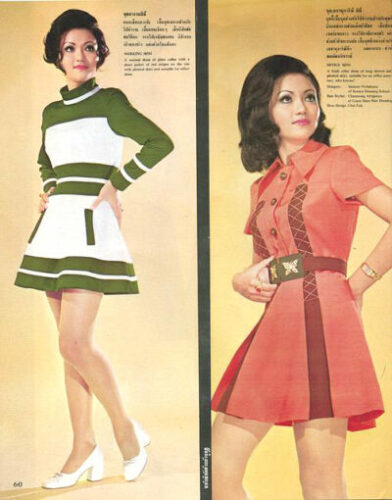
“Thai Fashion” magazine. Photo: Showtonight / Postjung
Women’s fashion magazines were an important way of conveying fashion especially in the ‘60s, Villa said. Various magazines would publish photos of Western fashion trends, while advice and fashion columns written by dressmaking teachers and home economists would advise readers on how to style new types of clothes, how to dress for different occasions, and even sewing instructions on how to DIY one’s own fashions.
“Many people look like they just stepped out of a magazine. The media and movie stars played a major role in spreading these fashions,” Villa said in a phone interview.
In the late 50s to early 70s, Thailand’s economy was rapidly developing with industrial capitalism. Western clothes became more and more popular especially after World War II, to help show that Thais were in good relations with the United States, which was increasingly influential in the region, as noted by Matthew Phillips in “Thailand in the Cold War.”
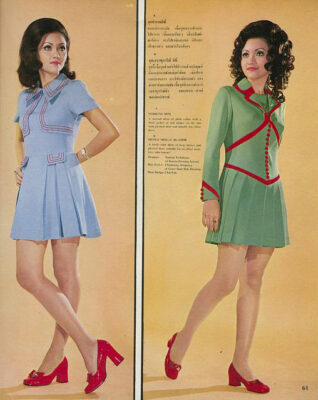
magazine. Photo: Showtonight / Postjung
Vintage Thai fashion magazines are not well-preserved, save for those in private collections. For those interested in reading further, some vintage fashion scans can be found at Chulalongkorn University’s Faculty of Arts library or the National Library.
Scans of a 1968 Thai women’s fashion magazine were posted recently on the Asian Fashion Archive Instagram page, run by New York-based fashion museum curator Faith Cooper. She often posts photos of vintage Asian fashion from her previous research, focusing on a different country for every six posts.
“I think in the West, people often lump Asian culture into one group, and it is often depicted in a negative way. So with this account, I wanted to show the diversity of Asian culture and that it is not just Japan, China, Korea, etc.,” Cooper said.
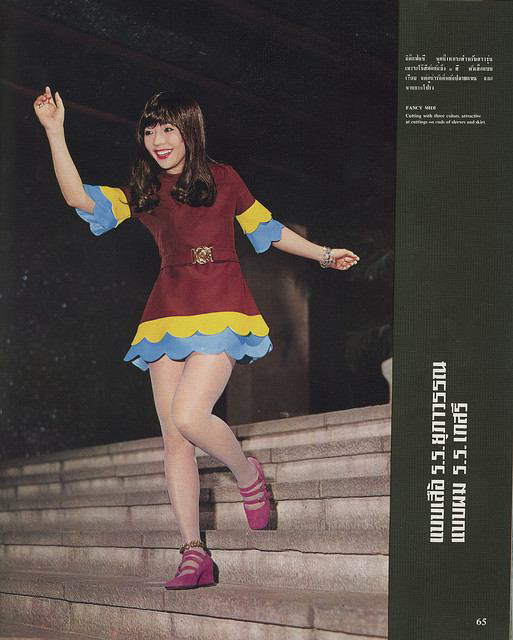
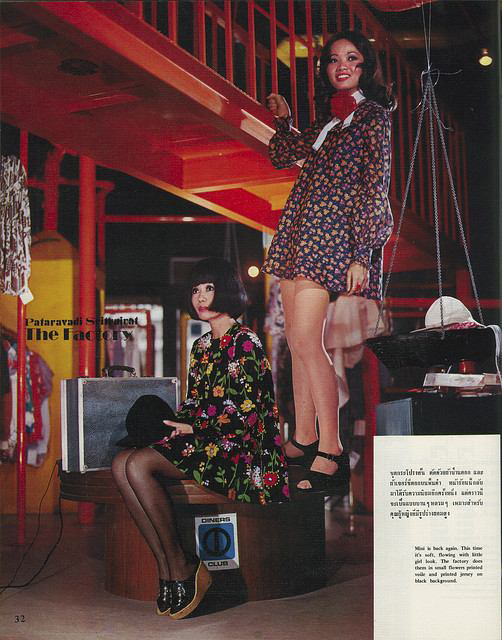
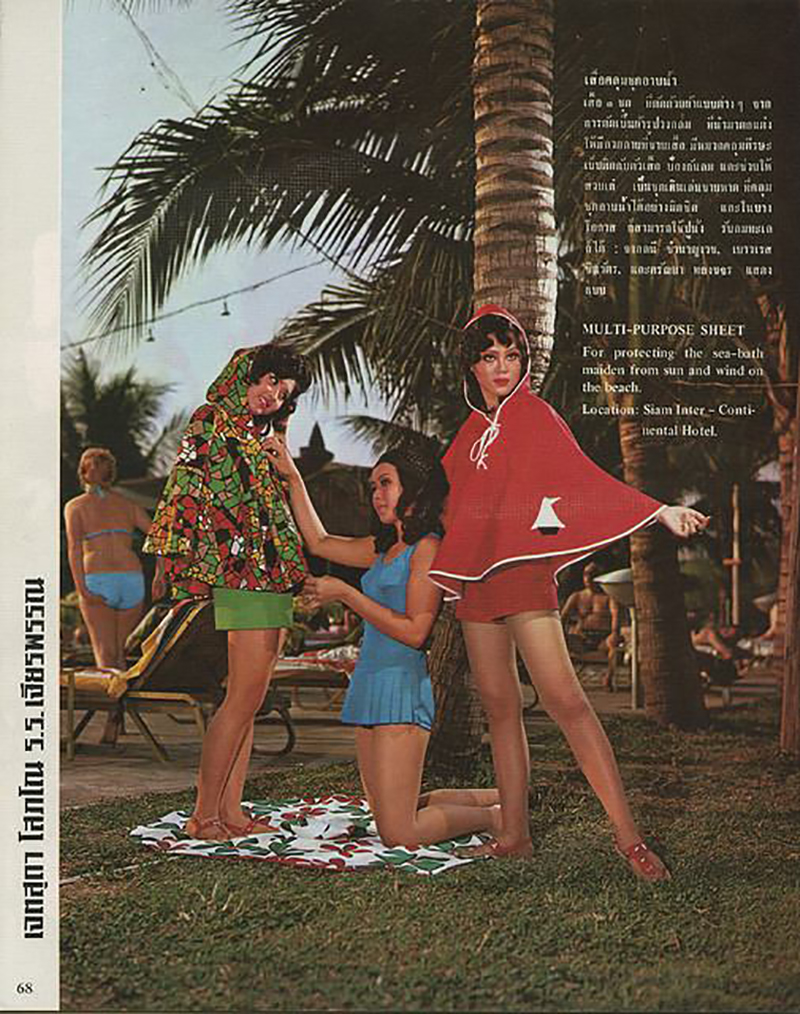
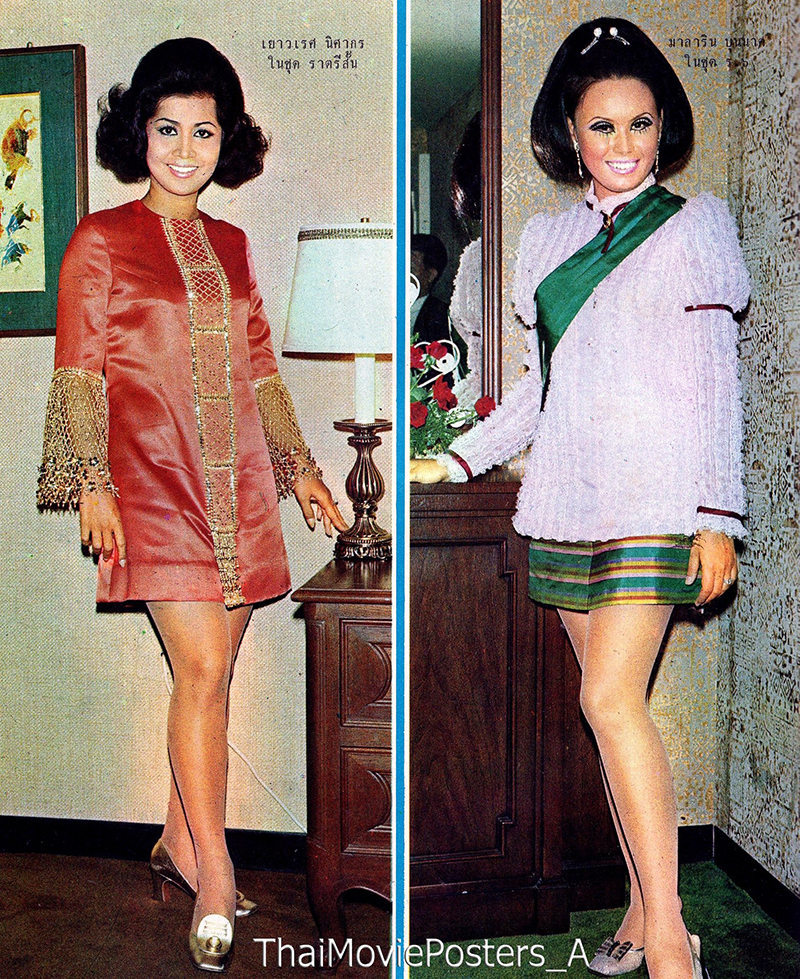
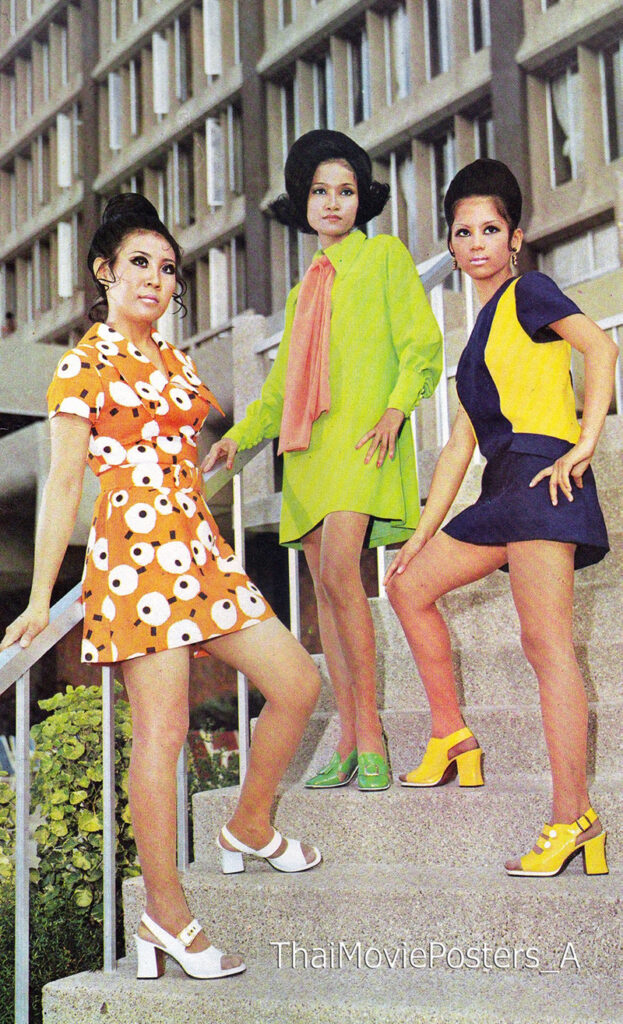
Related stories:
American GIs Celebrate Christmas 1971 in Udon Thani (Photos)















































